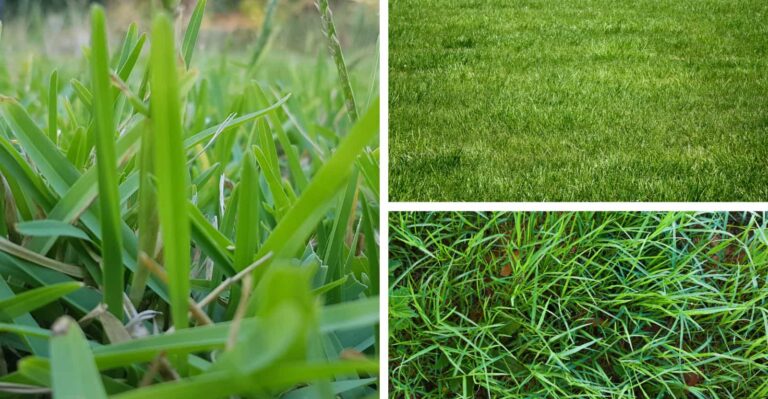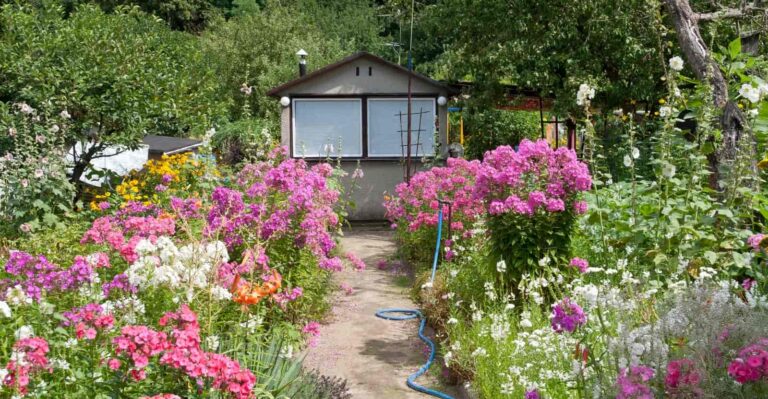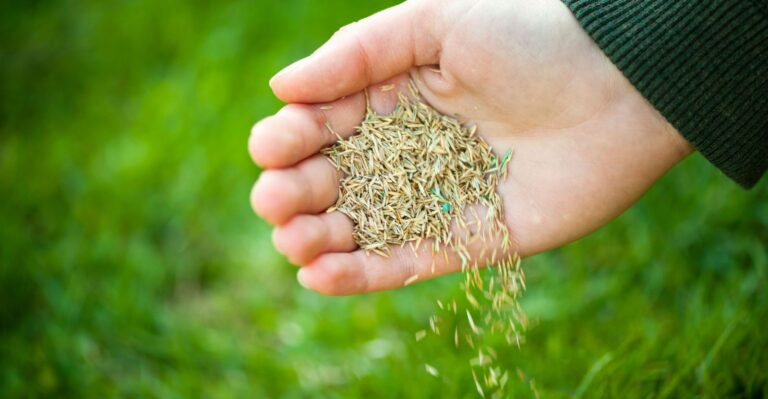Amazon has put together some great Home Gift Deals – save money and get your shopping done at the comfort of your home! Click here to see deals on Amazon
For a beautiful low maintenance yard, Zoysia grass is a perfect choice. It’s a warm-season grass that goes dormant in fall and turns a brown color. But it turns green again in the following spring.
It’s a popular grass that can survive cold weather without needing much care. In this article, we tell you everything you need to know about growing and caring for Zoysia grass and tips on fixing common problems.
Let’s get started.
What is Zoysia Grass?
Zoysia is a warm-season grass suitable for mild climate regions. It won’t survive in frigid temperatures, but it can withstand heat, drought, and high foot traffic.
Zoysia grass toughness is evident in hot weather. From late fall to early spring, they go dormant, and the grass turns brown.
Zoysia has thin dark green blades with fine to medium texture. When newly planted, It needs lots of water but then needs less care once the grass has been established.
The stiff, wiry texture makes it a bit uncomfortable to walk barefoot, but they’re easy to grow and maintain. You can plant it in almost any soil type, and it can withstand salt spray.
This makes it ideal for growing in coastal regions. It’s a very versatile grass that makes your lawn look dense green, and beautiful without needing much care.
What are the Pros and Cons of Zoysia Grass?
In recent times, there has been considerable interest among homeowners to plant zoysia grass in their lawns. The biggest attraction is due to its low maintenance requirement and natural growing ability.
If you’re planning to grow zoysia grass on your lawn, you need to know both pros and cons.
Pros of Zoysia Grass
- Easy to maintain and produce thick, green, and cushy turf
- Can be mowed very short (1/2 to 1 inch) without adversely affecting the growth
- It can tolerate severe heat
- Require less water than other grass types
- Maintains consistent green patch in the lawn
- It multiplies quickly even in most challenging grass types
- Once established, it requires less grass fertilizer
- The robust growth prevents the crabgrass and other weeds growing in the yard
- Easily withstand wear and tear during the summer
Cons of Zoysia Grass
- It becomes dormant, and the grass turns brown from late fall to early spring. Whereas the cool-season grass gives you a more extended green period
- It takes some time to get established
- It’s invasive and may become hard to control
- It’s a fire hazard when the grass is dry and brown
- Difficult to grow in a shady area
Overall, Zoysia grass is excellent for the hot and drought-prone climate. It grows best in the sandy soils of Southern New Jersey or any area where it can get full sunlight.
Due to its low maintenance requirement, it’s also used in commercial areas, such as airports, parks, roadside, and cemeteries.
What are Zoysia Grass Types?
There are different types of Zoysia grass, but the following are quite popular among residential and commercial landscaping.
Zoysia Matrella: This is also known as Manila grass and has a more elegant leaf texture. It propagates significantly during warm weather conditions but is less cold tolerant and grows slow.
It takes some time to get fully established and is often used in areas where thick greenery is desired.
Zoysia Japonica: It’s popular on the southern side of the United States and known as Japanese or Korean lawn grass. The grass leaves have a coarse texture and are light green. Many commercial garden centers and retailers sell seeds with instructions on how to plant it properly.
This is generally used for lawns or general turf areas. You can grow it through seeds, but it’s far easier to establish it through sodding or pods.
Zoysia Tenuifolia: It’s for those who don’t want a taller and expanded look of their lawn. It has a smaller clump and puffy appearance.
It’s not very cold hardy, so it’s better adapted to the coastal plains of South Carolina. It’s slow-growing grass and used as ornamental specimen plants.
Zoysia Meyer: If you’re looking for Zoysia variety that is also a bit cold-tolerant, you should choose Zoysia Meyer. This is also available in seeds to grow cheaply.
It’s a low-maintenance Zoysia variety. It’s another variety of Zoysia Emerald to create a soft lawn of thin blades with slow growth. You need to mow it only a couple of times in a month.
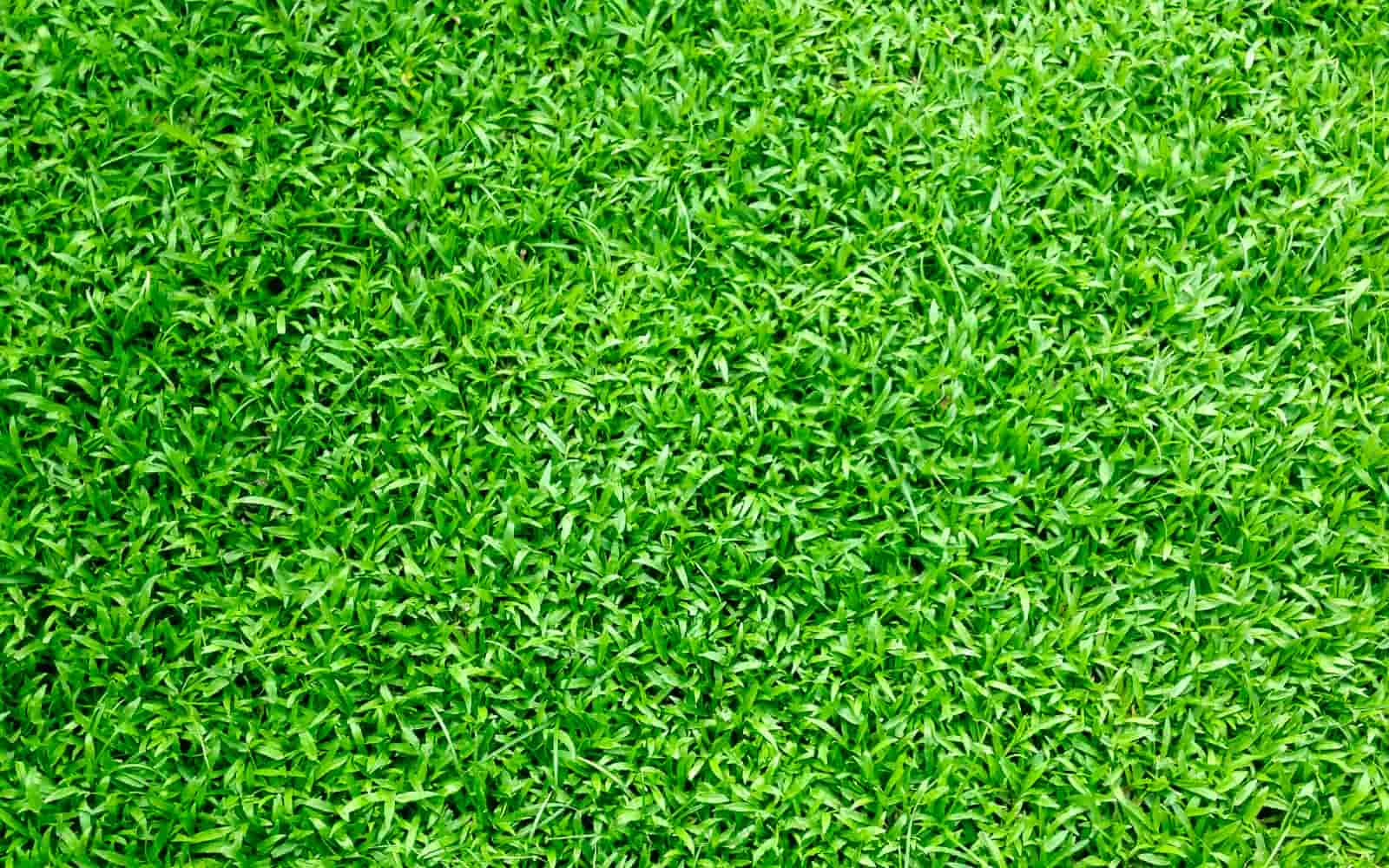
Where does Zoysia grass grow best?
Zoysia is a perennial season grass that grows best in warm climate zones. This makes it suitable to grow in hot and humid southeast parts of North America and Australia.
Zoysia Japonica is the most popular among gardeners as its shade tolerant and has coarse blades. Areas in USDA planting zones 6 to 11 are suitable to grow zoysia grass.
Zoysia grass seed for sale: Where to buy it?
You can buy Zoysia grass seeds from the garden center and nursery. There are also online stores such as Amazon from where you can buy varieties of Zoysia grass seeds.
How long does Zoysia grass last?
Zoysia is a perennial season grass that lasts several years with proper care. You can plant it in late spring to early summer after frost has passed. You can also plant it in early fall but do it before the frost has fallen.
If you’re using Zoysia seed in your yard, it takes anywhere from 14 to 21 days to germinate. You get the best germination when the weather is warm, and the yard is exposed to full sunlight.
You can trim big tree branches in your yard to allow sunlight to fall directly on it. Don’t cover the seeds with soil or any other object as that blocks the sunlight.
How to create a green yard from Zoysia seed?
The sod is the easiest and quickest way to lay Zoysia grass in your yard. But it’s often expensive and needs some lawn care. If you have time in your hand and you can wait a while to get the zoysia grass on your lawn, then grass seed may be the best option.
But remember that Zoysia is a slow grower, so it may take a while to get fully established in the yard. Follow these steps when growing Zoysia in your yard.
Step 1: Buy a high-quality seed.
A high-quality zoysia seed allows you to grow a healthy green carpet on your lawn. With an increased germination rate, you won’t be required to reseed the lawn or have any leftover patches in the yard.
Step 2: Measure the area.
You need to know the yard size where you want to grow Zoysia. Measuring the area allows you to determine the seed and fertilizer required to get the job done correctly. You don’t want to buy too much or too low of seeds and fertilizers as that won’t be ideal.
Step 3: Check the soil.
Although Zoysia grass can grow in most soil conditions, it works best in slightly acidic soil with a pH of 6 to 6.5
You can use a soil pH tester to check if you need to amend the soil. A balanced soil allows you to grow grass quickly without spending much time and effort on maintaining it.
Step 4: Prepare the Ground
Before you start spreading the zoysia seed, you need to prepare the ground. You can use a gardening tool such as a shovel to break large soil chunks and remove any rocks and debris from the field.
A fine and porous soil allows the air and water to get deep into the land that helps with the germination process.
Step 5: Spread the zoysia seed evenly.
You have to spread zoysia seeds evenly in the yard. You can use a spreader to help you apply the right amount of seed. Don’t overcrowd the seed as it slows the germination and may cause a weak patch of grass in that area. Scotts Whirl Hand Powered spreader is a great choice.
Spreading too thin may cause a visible patch on the ground and may not look good. You can use a hand spreader for smaller lawns, and for a medium to large size yard, you can use a walk-behind spreader.
Another alternative is to use the Zoysia sod plugs. These are small blocks of Zoysia grass plugs that you can plant quickly in your yard. It may take around 1.5 to 2 years for zoysia grass to get fully established on the lawn.
Step 6: Water the seed.
Zoysia grass required lots of water at the initial phase. This helps with germination and encourages quick growth. Make sure the seed isn’t covered with soil and can get direct sunlight. Protect the exposed seed from birds and rodents till it germinates.
It may take anywhere from 14 to 21 days for the seeds to germinate. You may have to keep the soil consistently moist during this period, but don’t overwater the yard.
Step 7: Maintaining new zoysia grass.
After the seed has established itself properly in the ground, wait for a couple of days before you start mowing with a lawnmower. Give grass time to get its root firmly established in the land and don’t mow until it has grown at least 2.5 inches tall.
When you’re mowing, don’t mow it too small and keep the mowing height maximum of 1/3 of the blade length.
That should be enough to maintain the newly grown zoysia grass properly. Anywhere you find a patch where the grass isn’t growing, you have to fix it as the rest of the grass won’t cover that patch itself.
If you find the seeds to be germinating in that area, you can apply fertilizer and water to encourage growth. But if you need to reseed it, you can dig and loosen the soil and spread the zoysia seed again.
Ensure that the ground is fertile for the seeds and remove any dead grass or debris from the patch area. If the soil isn’t suitable for growth, you may have to amend the soil. Applying more nutrient-rich topsoil can help you to bring the land up to proper growing conditions.
Keep watering and fertilizing it with a grass fertilizer to encourage growth. Don’t walk over the newly seeded area and reduce any stress to the grass in a patched area.
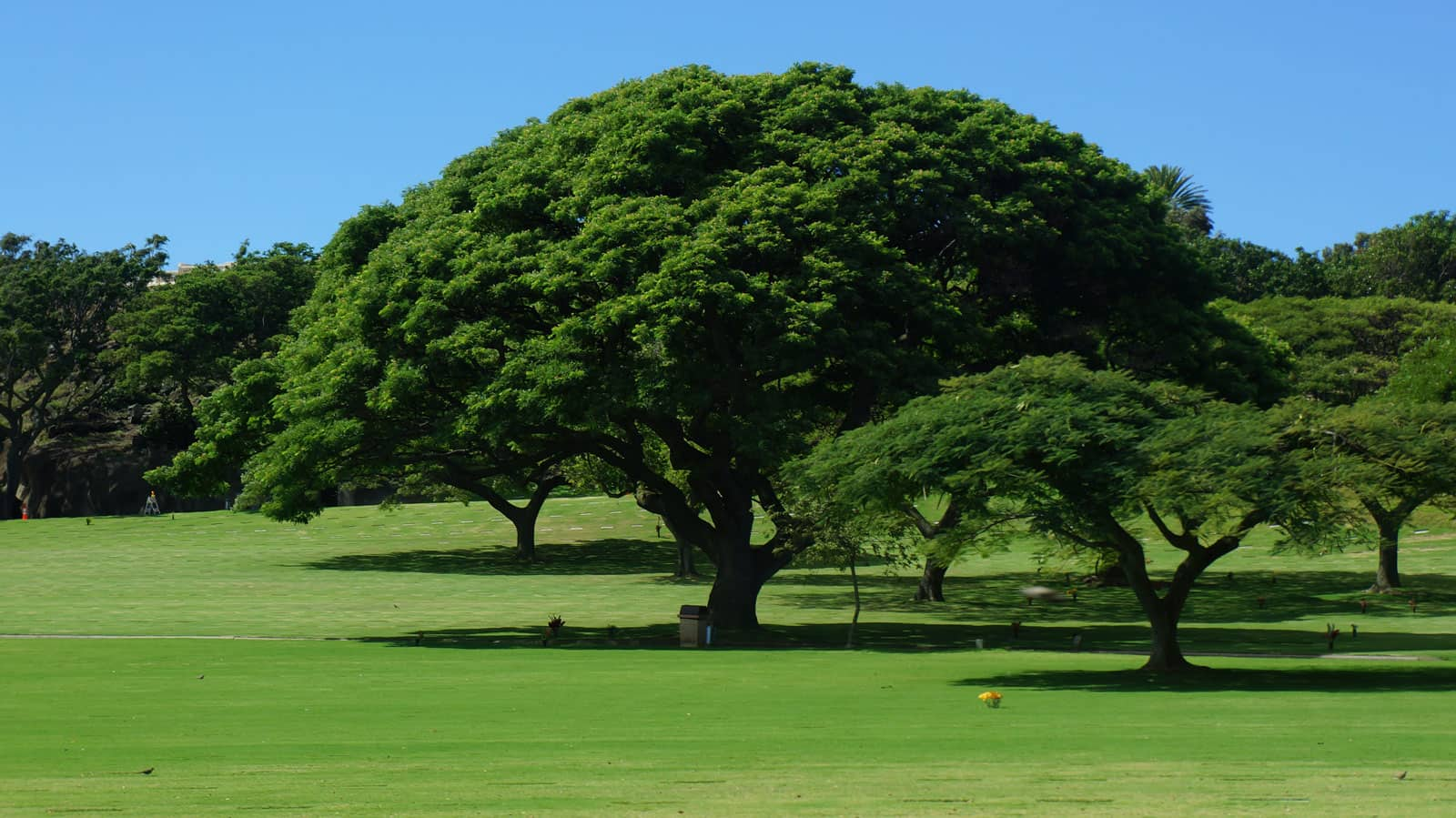
How to properly maintain Zoysia grass?
Zoysia is a low-maintenance grass and, with proper care, can extend its life and overall health. Here are some ways to properly maintain zoysia grass.
Fertilization
Zoysia grass won’t need much fertilization except its initial germination stage. It requires low nitrogen fertilizer that you can apply lightly in spring and fall.
Remove Thatch
Thatch is a dead grass-root above and below ground. It hinders the water flow from reaching the roots and blocks the airflow.
It may cause root rot. You can use a dethatcher to remove the thatch when it grows more than 1 inch thick.
Use a dethatcher with 2 to 3 inches of blade spacing and set the depth to ¼ inch. Don’t dig it too deep as it may cause damage to the healthy roots under the soil.
Control Weeds
Zoysia is a robust garden grass, but weeds can hamper its growth as the grass has to share water and nutrients with the weed. You can apply pre-emergent herbicide from early to late spring to control weeds from growing.
If you already have weeds growing in your yard, use a post-emergent herbicide to control the weed growth. Don’t apply the post-emergent herbicide when the grass is growing and getting green. Wait till it has reached its required height and gets green.
You may have to apply post-emergent herbicide multiple times to get it under control. Maintain a gap of 8 to 10 weeks between applications. This helps the grass to get stronger and may control the weed naturally.
Watering
Zoysia grass doesn’t require much water. But if you have an exceptionally dry season and see the grass-developing brown patch, you can water it as needed. You don’t need to oversoak the ground, and light watering should be enough for the grass to turn green again.
Also, pay attention to the soil type. If you have sandy soil, it won’t retain water or moisture well, and you have to water it more often. Similarly, clay soils hold water longer, and you can increase the gap between the watering schedule.
Common Problem and Solution When Growing Zoysia Grass.
Zoysia is quite a robust grass and not bothered much by pests and disease. Here are some common problems and solutions when growing Zoysia lawn grass.
Insects and Pests
Many insects and pest infestations such as lawn grubs, Japanese beetle, and June Beetle may cause damage to the Zoysia roots.
A small infestation may not damage the lawn, and the grass can recover itself. But in the case of a significant outbreak, you have to apply pesticides to control the spread.
Slow Growth
Zoysia is a slow-growing grass lawn, so you have to keep patience while it’s growing and provide it with a suitable growth environment.
Mowing too early may damage the grass, so avoid mowing it until it becomes necessary. You can get back to the regular mowing schedule once the grass has fully established itself.
Invasive
Zoysia is an invasive grass that may crowd out and overwhelm other grass species and plants on the lawn. This may not be a big problem if you mow it on time and create proper boundaries around the flower beds to slow the spread.
Brown Patch
The brown patch is a sign that the zoysia lawn grass has a problem. This could be due to an unusually long winter, prolonged lower soil temperature, or disease. Once diseased, the recovery is slow due to long-dormant to semi-dormant conditions.
Moreover, Zoysia is the first turf to go dormant in the fall and the last to green up in the spring. You may see a more extended brown patch with Zoysia than other grasses. You can treat it with fungicides to prevent any disease and avoid excessive application of nitrogen.
Removing thatch regularly and mowing not too short may encourage growth. When watering, don’t water it in the evening as it increases the chances of root rot.
What’s the difference between Zoysia grass vs. Bermuda grass?
Zoysia and Bermuda grass are famous among gardeners. Zoysia is a warm-season grass, whereas Bermuda is hot weather grass. The significant difference is grass growth height and the lawn care needed.
Bermuda grass needs a bit more care than the Zoysia lawn grass. Zoysia, once established, almost needs a hands-off approach when it comes to maintenance. But Bermuda needs consistent attention, such as more water, fertilizer, and mowing.
The Bermuda grass is salt tolerant and is popular among beach communities. In contrast, Zoysia is prevalent in hotter and drought-prone regions.
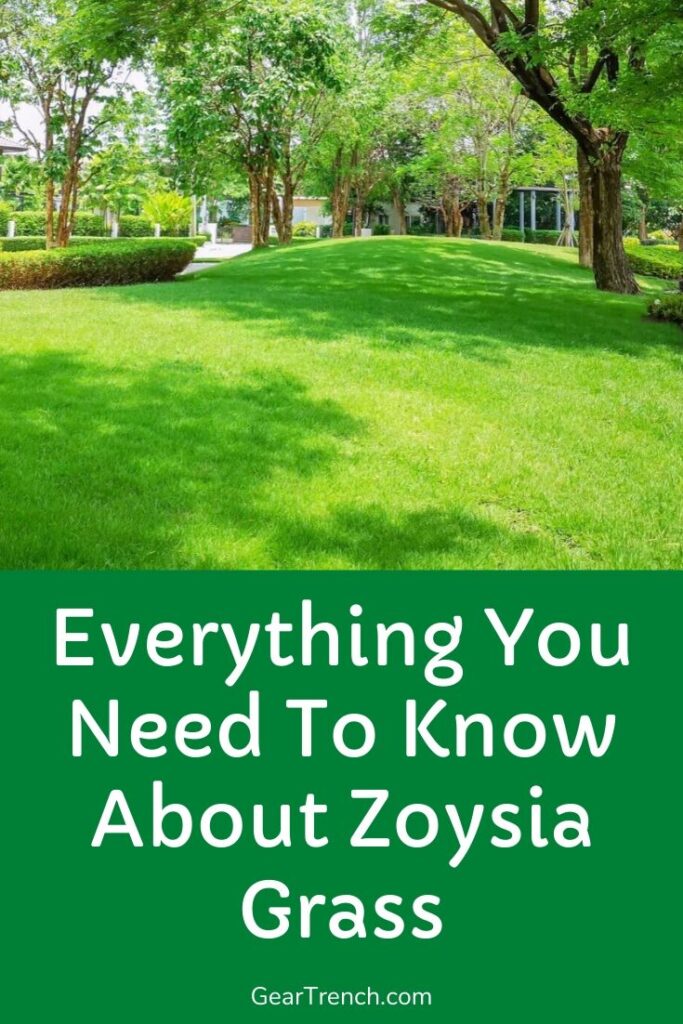
Don’t forget to share this post



